Introduction
Reflectively, establishing age forms is a critical element for deriving the structuring component in demographic studies since survivorship frequency and fecundity can be established by recording the age of a subject. Studying the inscriptions on a gravestone is essential in establishing age in cemetery demographic research.
Human beings’ survivorship and fecundity are greatly affected and influenced by age. Studying cemetery tombstone data is one of the main approaches preferred by demographic researchers. Moreover, this process involves an active collection of survivorship data in the cemetery tombstone’s remains (Rail, 2011). From this data, it is possible to accurately establish different ages of death for a group of individuals sharing the same time of birth interval. The results obtained can further be used to “construct an age-specific survivorship schedule for the cohort” (Alho & Spencer, 2005, p. 34). These cohorts are significant in the study of comparative factors, such as gender, historical events, socioeconomic status, and geographical locale on survivorship (Swanson, Siegel, & Shryock, 2004).
This reflective treatise attempts to explicitly explain the value of gravestones in studying demography as part of the observation science. Besides, the paper reviews the methods of data collection and explains the results of cemetery demography in curves and histograms. In addition, an in-depth analysis of the derived data is carried out to draw a comparison between the Chester and Chicago cemeteries.
Methods
Through observation, I collected data from the Chester Community cemetery for a period of two weeks. The data collected comprised of 50 gravestones. Components of the data collected included the aspect of age, gender, date of birth, date of death, and geographical location. The data were grouped into five classes comprising different age groups of the number of recorded deaths. Besides, raw data on sex, year of death, and year of birth of each person was collected. Indicated below is the summary of data collected for different ages of 50 individuals. The data is sorted by year of birth and death for the fifty persons as indicated in the table below.
Results
Raw Date Collected from the gravestones in Chester cemetery
Year of Birth – Year of Death
The raw data was then sorted and grouped by sex for each person as indicated below.
Table of Age at death and birth/death year for each person.
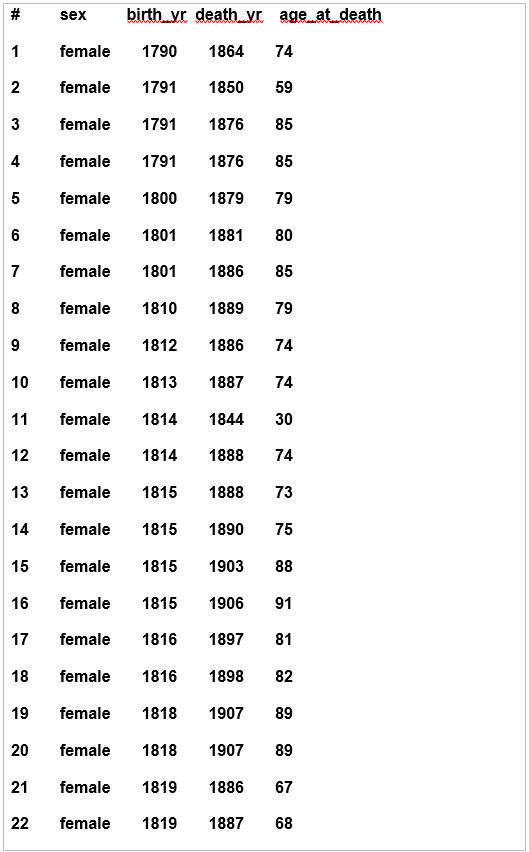
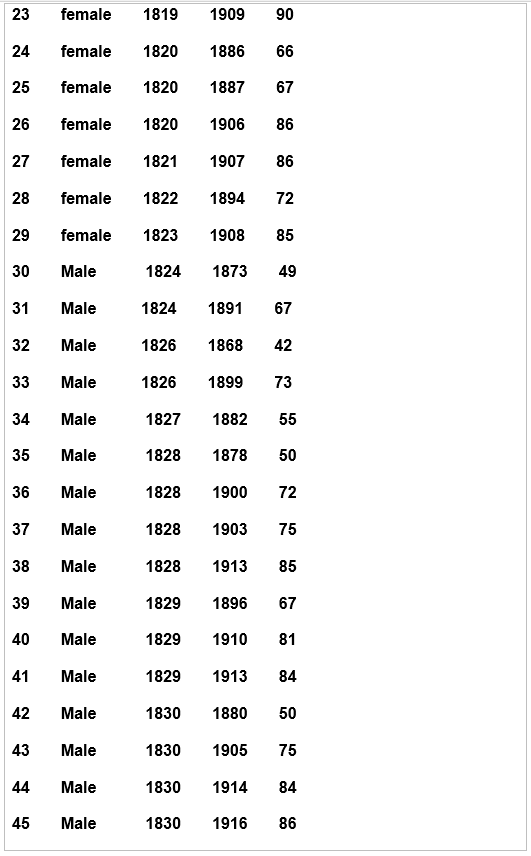
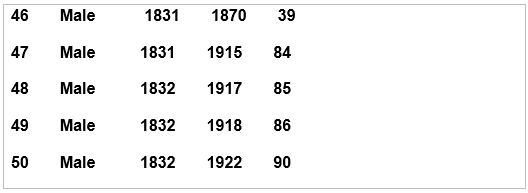
From the above data grouping, the survivorship table captures the details of males and females who had passed away before 1950 and were buried at the Chester Cemetery as indicated below.
The Survivorship Table for Data Collected
From the survivorship table, I derived a set of histograms on different ages and sexes of persons captured in the data as indicated below.
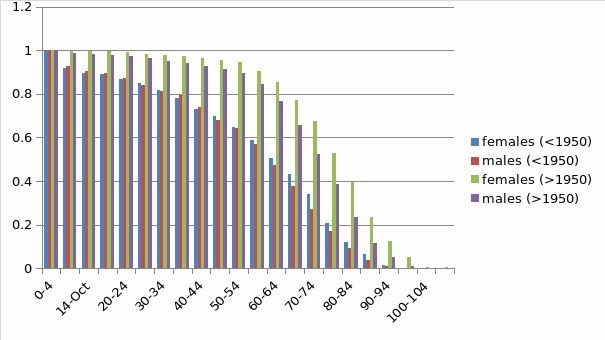
The y-axis represents survivorship while the x-axis shows the different age classes.
From the survivorship table, I derived the survivorship curve to capture mortality rates for the persons studied. The results are indicated below.
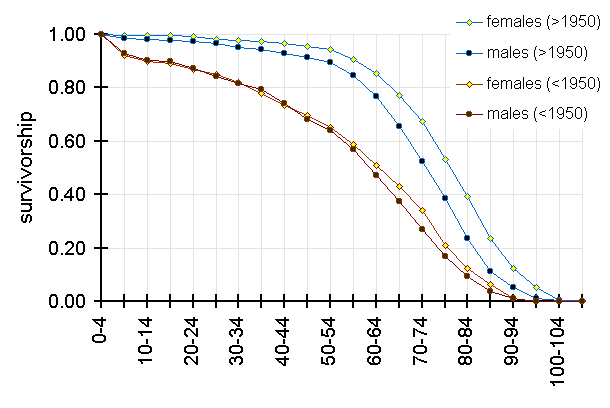
Discussion
Reflectively, the results indicate a normal distribution in survivorship rates between the males and females who died and were buried in Chester Cemetery before and after 1950. Generally, the survivorship level remained below 1 with the average being at 0.8.
The survivorship level was higher for females across all the age groups captured in the data sets. However, this level was even higher for deaths recorded after 1950 among the female population. This can be attributed to the fact that females have a higher life expectancy than males.
Besides, better health among the female population can also be attributed to the high survivorship rate. Due to modern family planning procedures, sensitivity to health issues, and proper dieting, females show higher rates of survivorship than males (Arafat & Allen, 1995).
Comparatively, the same characteristics on survivorship level are indicated in the Chicago Cemetery data which suggests that females have a higher survivorship rate than their male counterparts. Besides, data from both cemeteries have average survivorship of 0.8 (Rail, 2011). Conclusively, survivorship is determined by several factors, such as life expectancy, sex, and health.
References
Alho, J., & Spencer, B. (2005). Statistical Demography and Forecasting, New Delhi: Surendra Kumar.
Arafat, I., & Allen, D. (1995). Thinking about Population: An Introduction to Modern Demography. New Jersey: Rowman & Littlefield.
Rail, M. (2011). Chester Community Cemetery. Web.
Swanson, D., Siegel, J., & Shryock, H. (2004).The Methods and Materials of Demography, New York: Emerald Group Publishing.